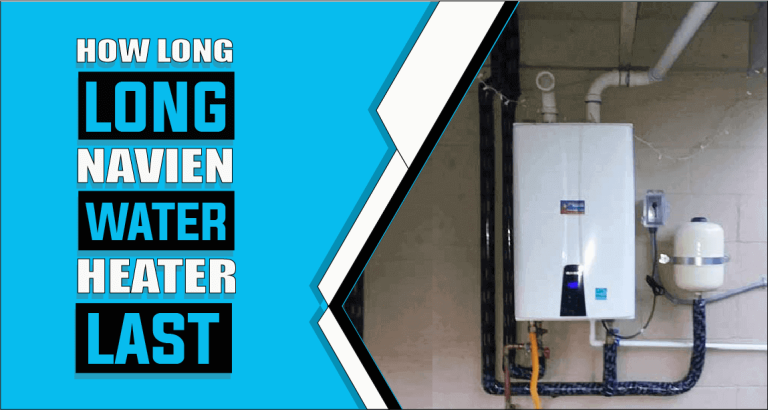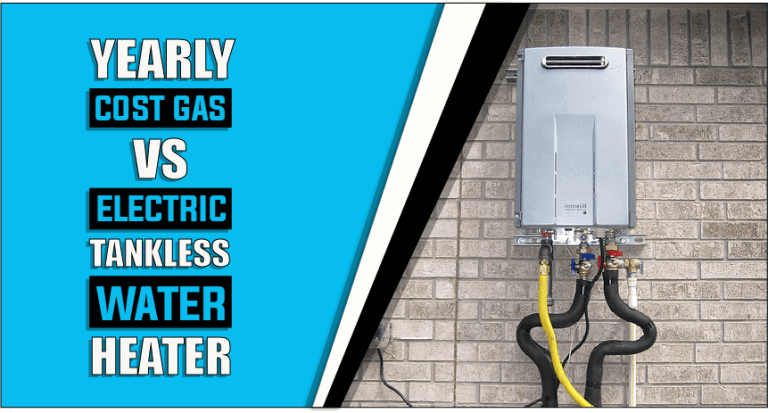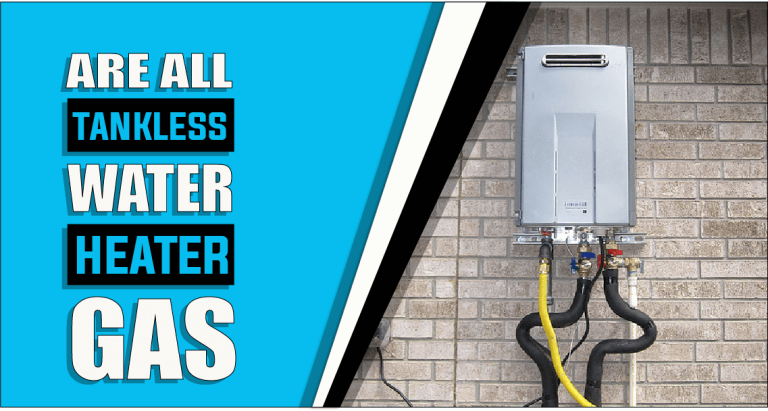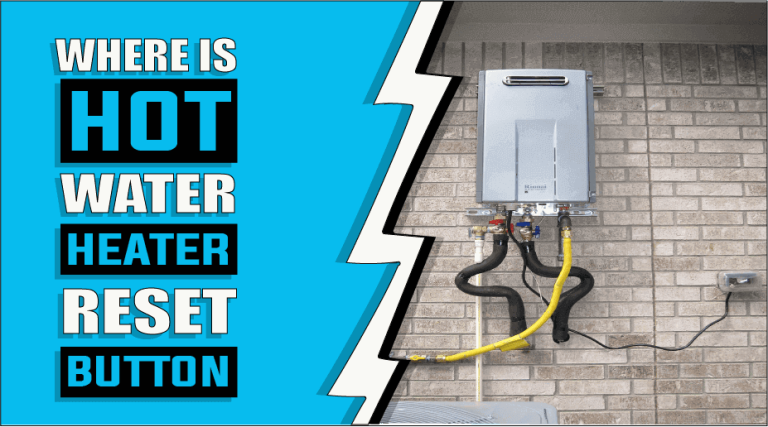What Does A Tankless Water Heater Look Like – The Truth Reveals
If you’re curious about tankless water heaters and what they look like, then you’ve come to the right place. We know that changing up your household appliances can feel intimidating, especially when it comes to something as essential as a heater for hot water! So are you looking to upgrade your household water heating system and curious what a tankless water heater looks like? Because we believe understanding what tankless water heaters look like is an important first step in taking the plunge and making a change in your home. So get ready, because, in this post, we’ll be breaking down the aesthetics of these much-loved tanks so you’ll have everything at your disposal when deciding if this nifty device will fit into your lifestyle!
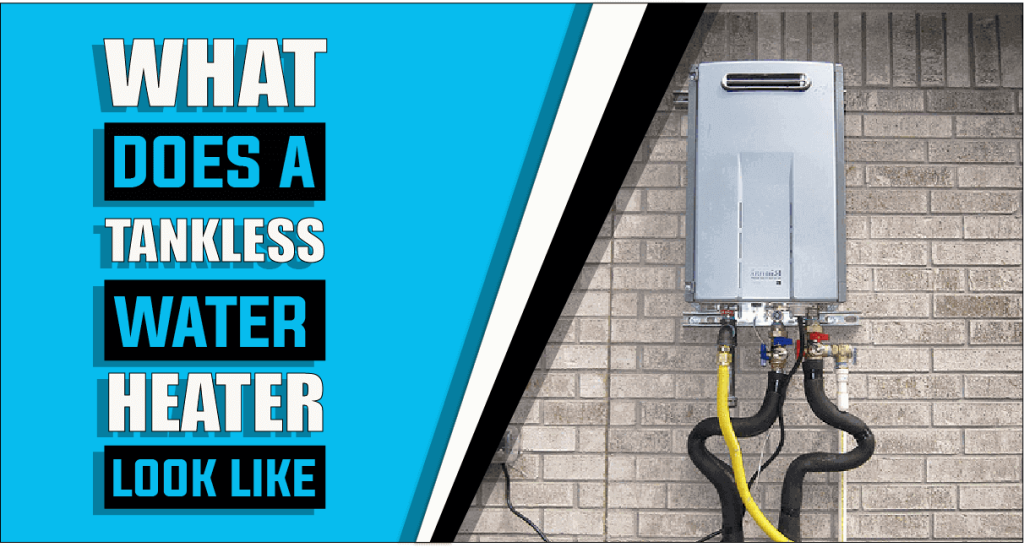
Let’s see what a tankless water heater looks like.
A tankless water heater is a compact, efficient appliance that can provide an unlimited amount of hot water while saving energy and space. They operate by running cold water through the coils of a high-powered heating element, which instantly heats the water as it flows through the system. Tankless heaters are designed to be small and aesthetically pleasing, with sleek designs that blend into any bathroom or kitchen decor.
Furthermore, tankless heaters are typically wall-mounted and come in various sizes to meet the needs of a variety of households. Their compact size also makes them ideal for apartments and other tight living spaces where traditional tank-style models may not fit easily. All in all, tankless water heater offers many advantages, including reliable hot water on demand and superior energy efficiency over traditional tank-style models. And they can come in sleek, modern designs that add an eye-catching aesthetic to any home. Keep reading to find out more about the evolution of tankless heaters and get an up-close look at different models currently on the market.
What Defines a Tankless Water Heater’s Aesthetic Appearance
Tankless water heaters are lauded for their sleek, modern design, but what exactly determines the aesthetic appeal of these stylish appliances? From color to texture and everything in between, there’s a lot that goes into making tankless hot water systems look.
1: Shapes
The shape of a tankless water heater can vary greatly, depending on the space it will occupy and the aesthetic it is intended to create. There are traditional cylindrical shapes, space-saving rectangle designs, and more modern forms that may be designed to fit into tight spaces or blend with other appliances. Additionally, there are exterior options that come in a range of styles such as rounded curves, boxy corners, and sleek finishes. All of these different shapes affect the overall aesthetic appearance of a tankless water heater.
2: Sizes
As far as size goes, most manufacturers offer models that range from around 17 inches tall to 48 inches tall depending on the capacity needed and purpose either residential or commercial. This affects the available space needed for installation as well as the overall visual impact of the unit itself. Compact models can fit into small spaces while larger units can provide more capacity and take up more room in larger spaces. Some units are designed to extend out from walls or even hang from ceilings for special design applications.
3: Materials
The materials used in tankless water heaters vary greatly depending on what type of finish is desired. Most commonly, stainless steel and copper are used as they provide durable finishes with high resistance to corrosion over time. Brushed nickel is also popular among those looking for something slightly different than traditional finishes while still seeking a classic look.
4: Colors
Tankless water heaters come in various shades ranging from neutral tones like white or black to bolder colors like red or blue depending on the model selected. Neutral tones provide a timeless look that can fit into any space without overpowering other design elements while bolder colors can create a focal point if desired by providing a dramatic contrast from the surrounding decor. Moreover, painted enamel finishes are also available to match existing fixtures or make an area stand out from its surroundings.
5: Styles
There are many different styles available when it comes to tankless water heaters, allowing you to select one that best suits your needs and adds a decorative touch to your home décor at the same time. Traditional freestanding designs are widely available with features like digital temperature controls, recessed panels, and built-in safety valves while contemporary wall-mounted versions provide convenience without taking up much space at all.
Core Components of a Tankless water heater System
With a tankless heating system, you have all the components necessary for on-demand warm water instantly delivered, it’s like having your fountain of hotness! Simply open the magical box and get ready to feel cozier than ever. Here are the core components of the tankless system:
1: Heating Elements:
Tankless water heaters are equipped with electric heating elements that quickly and efficiently heat water. These elements range in wattage, typically ranging from anywhere between 1,000 to 24,000 Watts. The higher the wattage, the quicker the water is heated. The heating elements are also corrosion-resistant and are capable of sustaining large amounts of pressure and temperature changes over long periods, making them an ideal choice for a tankless water heater.
2: Fans:
Fans are essential components in a tankless water heater, as they help to move warm air throughout the system and ensure that each area is appropriately ventilated. In addition to providing air circulation, fans also help to reduce noise levels by distributing sound evenly throughout the system.
3: Pumps:
The pumps on a tankless water heater provide a steady flow of hot water when required by the user. They work by drawing hot water from one part of the system and pushing it through pipes that lead to another point in the house where hot water is needed. The pumps are designed to run both automatically and manually to ensure that users get consistent performance from their tankless water heater.
4: Gas Lines:
Gas lines are necessary for those who have chosen to install a gas-powered tankless water heater in their home or business. These lines provide a connection between the gas source and the gas-powered unit itself, allowing it to draw natural gas or propane as fuel for its operation. These lines must be properly installed according to local building codes so they can operate safely and effectively without any risk of leakages or explosions due to improper connections or faulty materials being used.
5: Digital Control Panel:
Many modern tankless water heaters come with digital control panels that allow users to easily adjust settings such as temperature levels, flow rate, and more from an easy-to-use interface located either inside or outside of the unit itself. This helps users get the most out of their tankless systems while having full control over how much energy they use during operation without needing technical knowledge or expertise in plumbing systems. Additionally, some models may even feature Wi-Fi connectivity which allows users remote access so they can adjust settings remotely via app or web-based control panels for better efficiency management options too!
Options of Tankless Water Heaters to Match your Home’s Design
Now that you know what tankless water heaters look like, why not explore the various options out there to find one that will fit seamlessly into your home’s decor? With endless options to choose from, you can find one that perfectly blends in with your décor for long-lasting convenience.
1: Cool Contemporary Models
One of the most popular tankless water heater options that can fit seamlessly into your home’s decor is contemporary models. These sleek and modern tankless water heaters feature a minimalistic design that blends in easily with a wide range of existing home styles. Many contemporary models come in both electric and gas-powered varieties, offering homeowners the flexibility to choose the system that best suits their needs.
2: Unique Vintage-inspired Designs
For those looking to add an element of vintage charm to their home, unique vintage-inspired designs are another great option. Vintage-style designs often feature classic ornamentation such as decorative trim and filigrees, which can add visual interest to any space. Some vintage-inspired models even come with manual knobs for temperature adjustment instead of digital controls, providing an extra dose of retro charm. However, these traditional models may require more regular maintenance than their modern counterparts due to their lack of advanced features like self-cleaning systems and digital feedback displays.
3: Wall-mounted Tankless Heating Units
Another great option for those seeking a more stylish solution is wall-mounted tankless water heaters. Wall-mounted models use much less floor space than traditional units, making them ideal for tight spots like kitchen islands or closets. They also come in a variety of finishes, including stainless steel and enamel, allowing you to customize the look of your unit to better match your existing décor. Moreover, wall-mounted tankless water heaters feature digital control panels and adjustable thermostats that make it easy to select the exact temperature you need for each load of laundry or dishes.
4: Hardwired Underfloor Tankless Water Heaters
Finally, hardwired underfloor tankless water heater systems offer homeowners both convenience and energy efficiency without sacrificing style points in the process. These systems can be installed beneath existing floors without disrupting existing plumbing lines, providing a streamlined look as well as the added peace of mind of knowing that all hot water is being supplied directly from below the surface rather than from a bulky appliance above it.
What to Consider When Choosing a Tankless Water Heater
Choosing a tankless water heater can be an exciting investment, but there are some things to consider before leaping. From understanding all of your options and researching what type is best for you depending on factors such as climate, size of household, cost-efficiency, and more. It’s important to fully understand which one will meet both your present needs while also having potential longevity in mind!
1: Installation Consideration
When looking into installing a tankless water heater, there are many considerations to take into account. The first is installation. Tankless water heaters come in various sizes and configurations so it is important to assess the space requirements of your home before purchasing a unit. Many tankless water heaters require dedicated gas lines, ventilation systems, exhaust piping, and control wiring that may need special attention from a professional installer. It is also important to make sure that your incoming water temperature and pressure do not exceed the unit’s ratings, as this can cause damage or malfunction.
2: Energy Efficiency Ratings
In addition to installation considerations, energy efficiency ratings should be carefully considered when purchasing a tankless water heater. Different models will have different ratings depending on their features and the technology used, so it is important to research each model before purchasing. High-efficiency ratings mean lower monthly bills for energy costs and better environmental performance over the life of the product.
3: Flow Rate
The flow rate of a tankless water heater is also an important consideration when researching available options. This refers to how quickly hot water can be provided by the heating unit, measured in gallons per minute (GPM). If you have multiple hot-water outlets running simultaneously in your houses such as several showers operating at once or washing machines running simultaneously then you will need a higher GPM rating for your tankless water heater.
4: Climate Zone
Finally, climate zone should be taken into consideration when choosing a tankless water heater. Models are designed differently depending on their intended environment; some are better suited for cold climates with lower incoming water temperatures while others are best in warmer climates with higher incoming temperatures but less usage potential year-round due to seasonal differences in demand for hot water. Make sure you research models that suit your climate zone before making a purchase decision to ensure maximum efficiency and satisfactory performance over the long term.
Frequently Asked Questions
Tankless water heaters come in many shapes, sizes, and configurations. Many models are small appliances that can be mounted on the wall of a utility room while others are large tank-like structures that are designed to sit on the floor.
Tankless water heaters have become increasingly popular due to their energy efficiency, space-saving design, and potential for unlimited hot water, as opposed to traditional tank-style models that are limited by the size of their tanks. Additionally, tankless water heaters provide a more streamlined look as well as the added peace of mind.
The lifespan of a tankless water heater depends on its maintenance and usage but typically ranges from 10-20 years. This is significantly longer than traditional tank-style models, which need to be replaced more frequently due to their shorter lifespans and greater potential for malfunction or failure.
Tankless water heaters can be more expensive upfront than traditional tank-style models and require professional installation to ensure optimal performance. Additionally, depending on your home’s incoming water temperature and pressure as well as the number of hot-water outlets running concurrently, you may need a higher GPM flow rate model which can add to the cost of your unit.
Tankless water heaters offer a variety of benefits including unlimited hot water, space-saving design, and the potential for lower monthly energy costs. Additionally, tankless water heaters typically last longer than traditional tank-style models, making them a more economical choice over the long term.
Conclusion
We hope you found this article useful in answering the question: what does a tankless water heater look like? Tankless water heaters come in many shapes, sizes, and configurations. They are popular due to their energy efficiency and potential for unlimited hot water but can be more expensive upfront than traditional tank-style models. Additionally, they require professional installation as well as careful consideration of flow rate, climate zone, and home characteristics such as incoming water temperature and pressure. By researching available models and understanding the benefits of a tankless heater versus traditional tank-style models, you can make an informed decision that best suits your needs and budget. So why not upgrade today and start enjoying all the benefits that come with owning one?
Ella John is passionate about helping her readers make the best choice when purchasing a heater. She understands that selecting a heater can be difficult and strives to provide information to help make the decision easier. Ella’s website, Heatersinfo.com, provides valuable insight into heating trends and types of heaters and tips on how to care for them. She also advises selecting the right heater based on individual needs and preferences. Her expertise in electronics makes her an excellent source of knowledge, and she is confident that anyone who visits her website will find the perfect heater information for their needs. Ella’s dedication to helping others make educated decisions about buying the right heater is unparalleled, and she hopes to continue offering her expertise for many years. With Ella’s help, finding the perfect heater can be a breeze!

